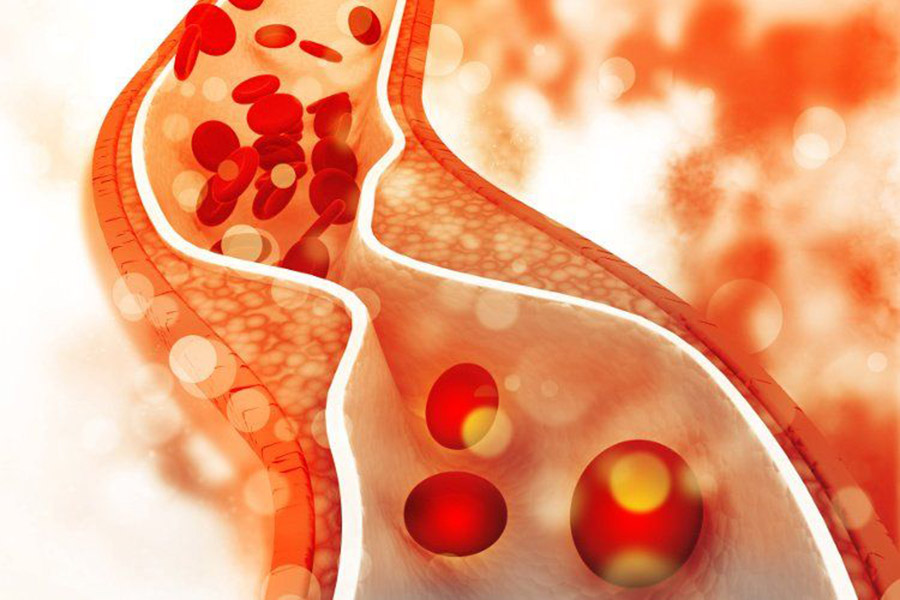
Contrary to the desire of the human community for the prosperity and equality of the entire world after the end of the Second World War in 1945, the financial capitalism named neoliberalism, fostered by the Western capitalists, former colonialists and emerging imperialist powers and following the trend of ugly inequality after the ‘Reagan-Thatcher era‘, that has maintained its sole control over the world’s total capital.
As a result, the gap between the rich and the poor widened unimaginably in liberal-capitalist countries around the world. The richest one per cent has accumulated more wealth than the entire human population.
According to a 2017 report, the richest people, who represent one per cent of the population, have increased their wealth by 82 per cent. At the same time, more than half of the world’s poor population has not been able to save a penny on their property.
A situation of poverty reduction cannot be created when one per cent of the rich claim their sole right to an 82 per cent income increase. The Asian Development Bank projected that between 1990 and 2010, 240 million people in South Asia could be lifted out of poverty.
But that could not happen. Banks like the World Bank and Asian Development Bank know that such a ‘miracle’ does not happen. Because they are partisan institutions of neoliberal finance capitalism that serve the interests of the very rich. The extreme poverty created by this inequality has fallen on women the most.
Wide-spreading poverty in Nepal
Official statistics show that 8.1 million people live in extreme poverty in Nepal. But in reality, this number is twice as big. According to the Annual Report of the Department of Health Services, 2020-21, 327 children are suffering from malnutrition.
Similarly, ‘National Micronutrient Status Survey (2016)’ has shown that 69 per cent of children aged 6-23 months and 53 per cent of children below five years of age have anaemia in Nepal. Similarly, 44 per cent of virgin girls, 41 per cent of childbearing age and 46 per cent of pregnant women have malnutrition.
These figures show evidence of widespread extreme poverty in Nepal. Though the poor have been made rich by “sharing the wealth of the rich on paper” in government statistics to create poverty reduction data is the report prepared by neoliberal economists who have read the capitalist ‘deceit and deception’ to put dust in the eyes of the common people.
The wide income inequality in Nepal at the moment proves that the situation of widespread extreme poverty has been more prominent since 2010. After 2010, the income of only the top 20 per cent (rich) has increased. The top 10 per cent own 26 times more wealth than the bottom 40 per cent of the population.
When we compare the wealth of the poor with the wealth of some rich people, the situation is appalling. In Nepal, in 2018, the wealth of a rich person increased by USD 20 million (Rs 25 billion) in one year. There was a 14.5 per cent increase in his wealth of USD1.5 billion.
The wealth (Rs 25 billion) increased by rich people is equal to more than half of Nepal’s social security expenses. The poor 40 per cent of the population can’t earn that wealth even in 100 years.
The same is the case with land ownership. The rich seven per cent have captured 31 per cent of all land, under many pretexts. A total of 81 per cent of women are landless and 44 per cent of Dalits are squatters. This fact confirms that the wealth of the nation has been stolen from a limited number of people proving the brutal reality of conflict between ‘power and wealth and working people’.
From 1960 to 1986, 11 industrial zones were active in Nepal where 611 industrial establishments were operating employing 18,087 employees. In 1990-91, the industrial growth rate was 15.05 per cent.
After 1995, when neo-liberalism was formally allowed to grow, the growth rate started to decline and reached 8.29 per cent and 2 per cent in 2005/2006. When it arrived in 2015/16, it went to eight per cent. It is self-evident that the industrial growth rate of 9.17 per cent is a false statement since the contribution of the industrial sector to the national GDP is 6,264 in the overall economy.
Analysing the reasons for the economic crisis
Today, the overall economy of the country has become import-oriented. In the year 2022, while import of Rs 17 trillion in the total trade, export was only Rs 2 trillion. In 1951, the total export was Rs 151 million. In 1988, exports increased by 28.3 per cent.
A year after that, in 1989, the embargo imposed by India reduced it by 12.3 per cent. However, there was an export trade of USD 155 million with China. In 1995, the privatisation implemented in the name of neoliberalism resulted in a negative industrial growth rate (12.8 per cent). In 1996, it was 2.9 per cent. By 1997, all of the nation’s publicly owned industrial establishments were sold off. Tea Development Corporation with national history was also auctioned.
The ‘structural adjustment’ policy of the World Bank was implemented after 1991 and the policy of public finance and privatisation of the industrial sector was implemented to capture Nepal’s economy and uplift the Jahaniya class (a coalition of political party leaders and financial capitalists who succeeded in seizing power) and farmers; it was a mechanism to be implemented according to the planned strategy to maintain complete authority over small entrepreneurs, workers, patriotic entrepreneurs and small traders.
Therefore, what can be said is that the post-1989 authoritarian multi-party system (West Ministerial Parliamentary System) in the past in Nepal is the ‘collapsing feudalism and rising primitiveness’. The conflict of Nepali society from ‘capitalism’ has been transformed into ‘exploitative conflict between the middle class and entrepreneurs.
The impact of neoliberalism was not only focused on the destruction of public enterprises. It adopted a policy of displacing the enterprise sector with direct involvement (both labour and capital investment) of the poor and middle-class people.
For example, before the introduction of neoliberalism, the growth in overall output was 26.1 per cent in 1991-92, 32.8 per cent in 1993-97, and reduced to 16.3 per cent in 1998-2001. Similarly, in 1991-92, the carpet industry, which was growing at a rate of 42.2 per cent in production, turned negative (deficit) at -5.90 in 1998/2001. Both these industries were areas that provided ample employment opportunities to workers. Why did it happen to destroy production, business and employment within a few years?
(a) The production of ready-made garments in Nepal became challenging for the ‘European-American Multinational Corporations’ who were able to invest in ready-made garments in Bangladesh and exploit the workers. Investors in Nepal were Nepali entrepreneurs and they got export quota. Therefore, the readymade garment enterprise was terminated in a planned manner in favour of the multinational corporation. The leaders of the Nepali Congress who were anti-socialist and pro-finance capitalist economists were involved in this round. Organised corruption was established in politics from this time.
(b) To sell the large number of workers involved in the carpet industry to ‘Arabs and Malaysia’, a ‘criteria-certified system’ named Ragmark was brought to Nepal from America. Through that, carpet industries were brought into controversy and forced to close. In the meantime, hundreds of companies have been opened to dispose of manpower and labour force. Along with carpets, jute, sugarcane, tobacco, and cotton workers were shut down in the local factories and made jobless, and a large number of workers were deported in 2002.
As a result, food exports, which were growing at the rate of 1.85 per cent in 1975, 2.10 per cent in 1980 and 3.81 per cent in 1985, declined to 0.11 per cent in 1990. For the first time in 2002, Rs 8 billion worth of food was imported, and in 2019, more than Rs 2 billion worth of food was imported.
Similarly, the growth rate of agricultural raw materials, which was 13.59 per cent in 1975, reached 1.97 per cent in 1990. After 1990, political parties in favour of neo-liberalism liberalized imports and cancelled the import restrictions, stopping the competition with foreign goods in the newly emerging market of Nepali goods and cancelling the concessional subsidy given in agriculture.
Due to these anti-patriotic and entrepreneurial policies, exports gradually replaced and imports began to increase. The provision of the import certificate was cancelled. Excise duty was levied if someone produced too much food. The value-added tax was imposed when the same item was sold and distributed in the hotel. The economy was gradually transformed from an enterprise producing goods and services to a system of “making money with money”. The Privatization Act was passed in 1994. With the passing of the Act, many of the 43 public establishments were privatised. In 1997, six other public establishments were sold.
But the 2000 DFID report says that this privatisation did not achieve any results where, on the one hand, public institutions were sold, on the other hand, the impractical privatisation failed. Widespread corruption and foreign interests remained the driving force behind privatisation.
The foreign/domestic interest in implementing the policy of expatriation by displacing the workers was not small. The mechanism established in the Ministry of Finance under the name of “Consulting for the Management and Restructuring of Public Institutions” was opened to maintain the financial rule of Western capitalist countries. These conclusions were drawn by the National Planning Commission itself.
According to the data from 2017, the consumption of the poor population below 40 per cent has a total share of 76 per cent, while the top 10 per cent of the rich consume 45.1 per cent of the goods. The income of the bottom 40 per cent of the poor population is only 4.1 per cent of the total income. While the upper rich population pockets 56.2 per cent of their income, 40 per cent are under the grip of poverty. Then, 60 per cent of the population consumes only a fraction of the total 33.309. But the top 20 per cent alone consumes 66.701 per cent. The story of poverty reduction in Nepal due to this is just a story of ‘stabbing in the eyes’.
The top 20 per cent of the population controls the ‘state’, in principle with enormous wealth, and have exclusive rights in politics. In other words, ‘the family that has a lot of wealth has a hold on politics’ or those who have a hold on politics are accumulating a lot of wealth.
This group, the “Jahaniyan ruling family or group” has been formed in Nepal from some elite families who dominate the traditional state system, limited families under the leadership of the Nepali Congress established by the 2007 changes, and families of limited leaders who have been in power since 1990 due to left-wing politics.























